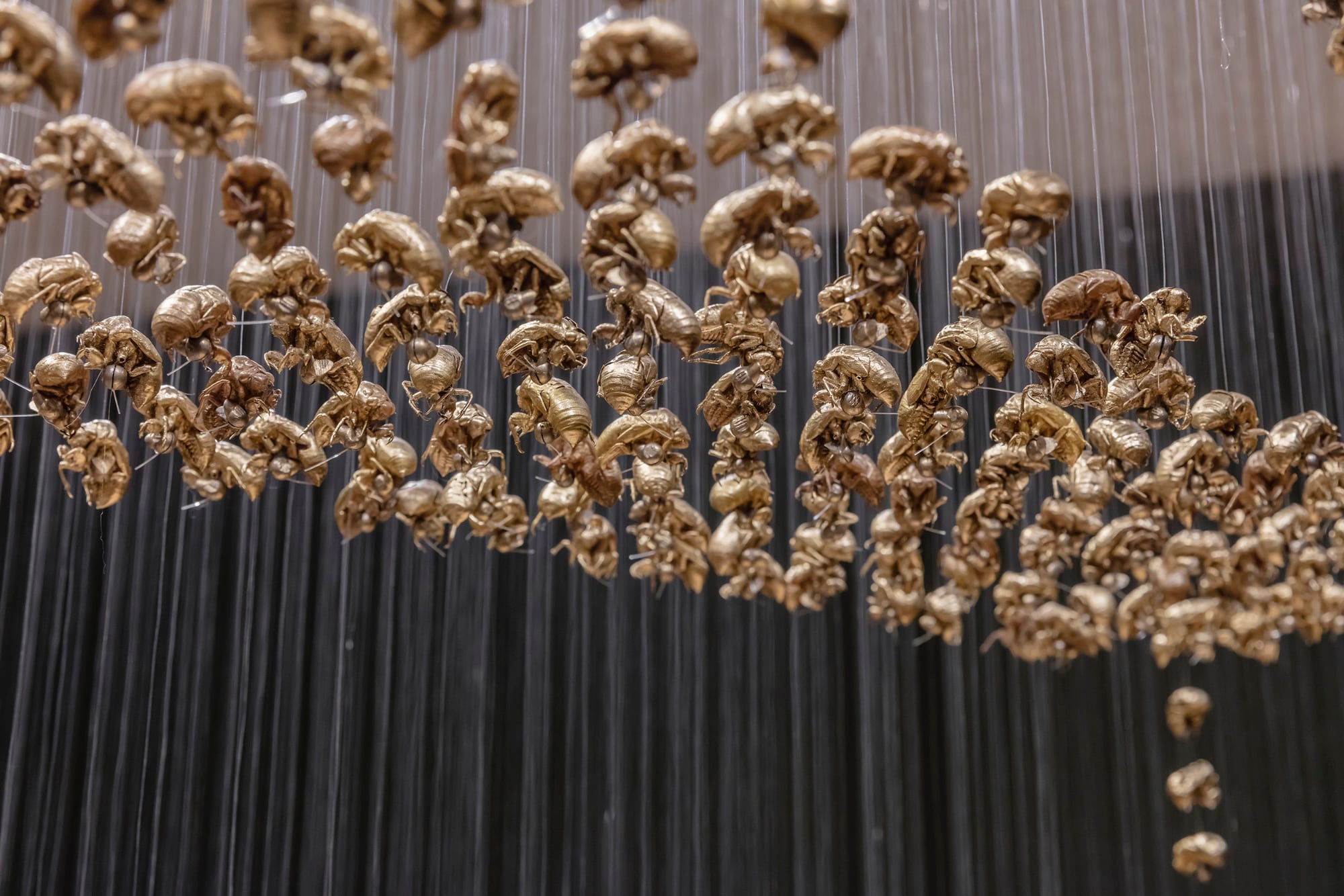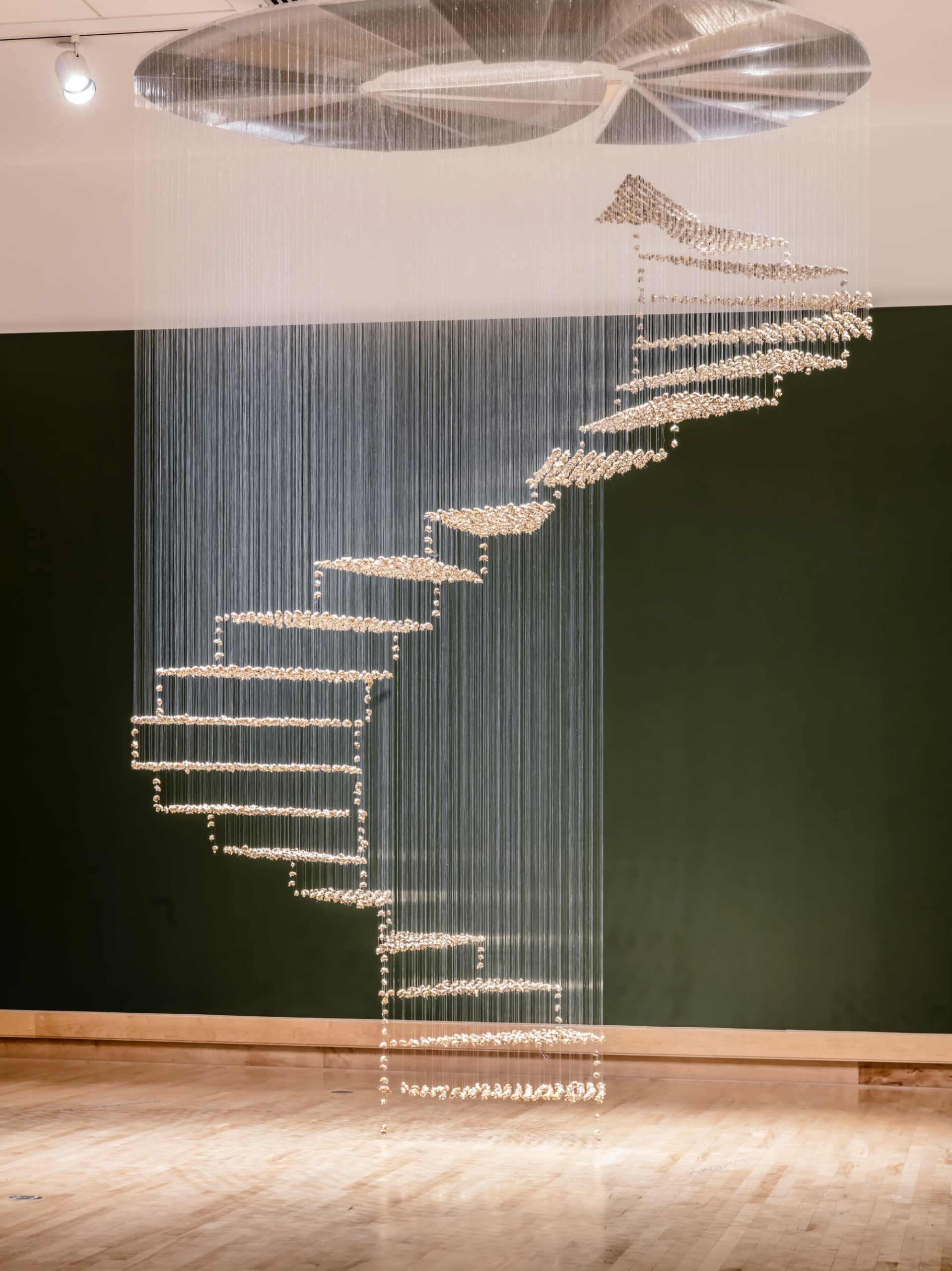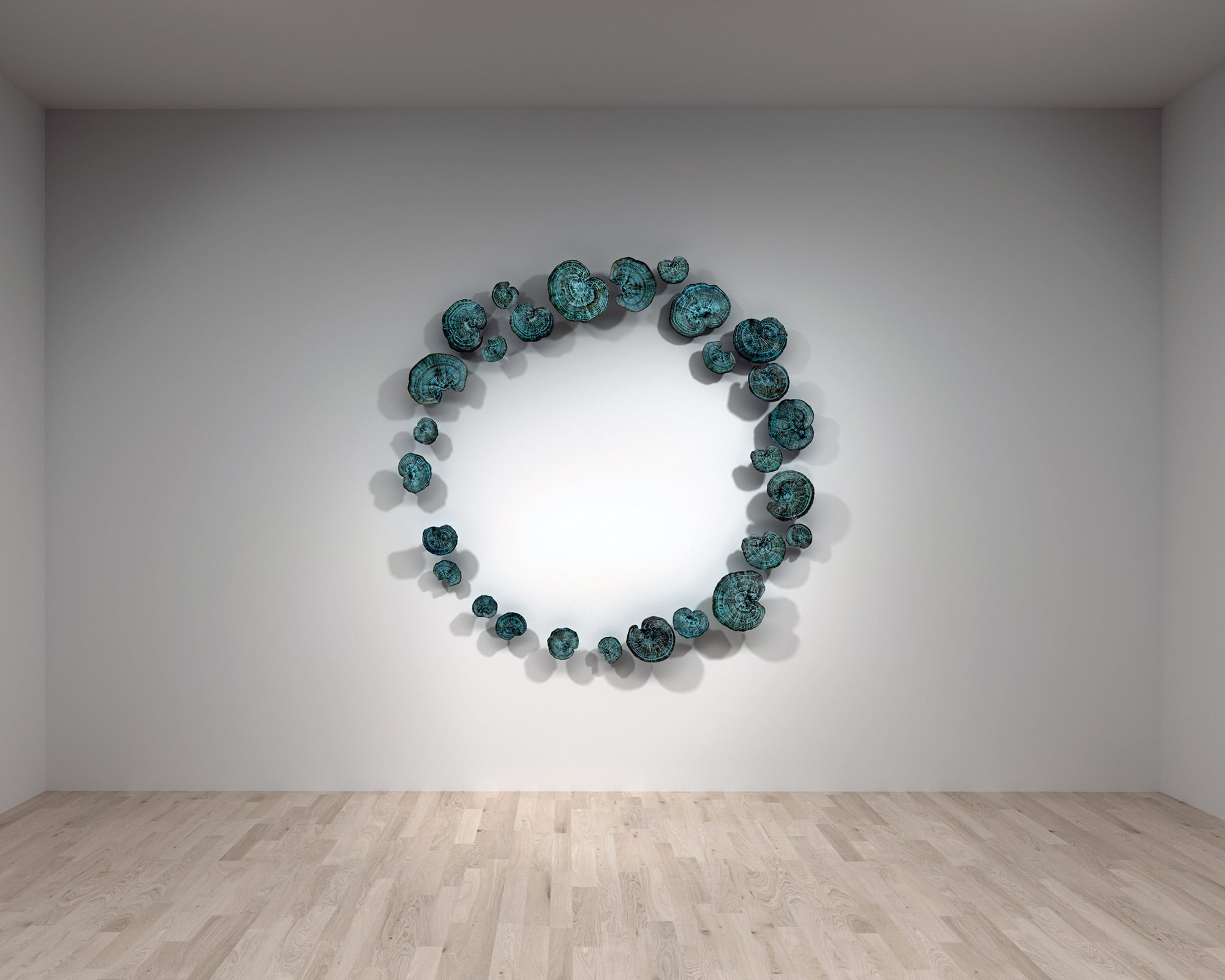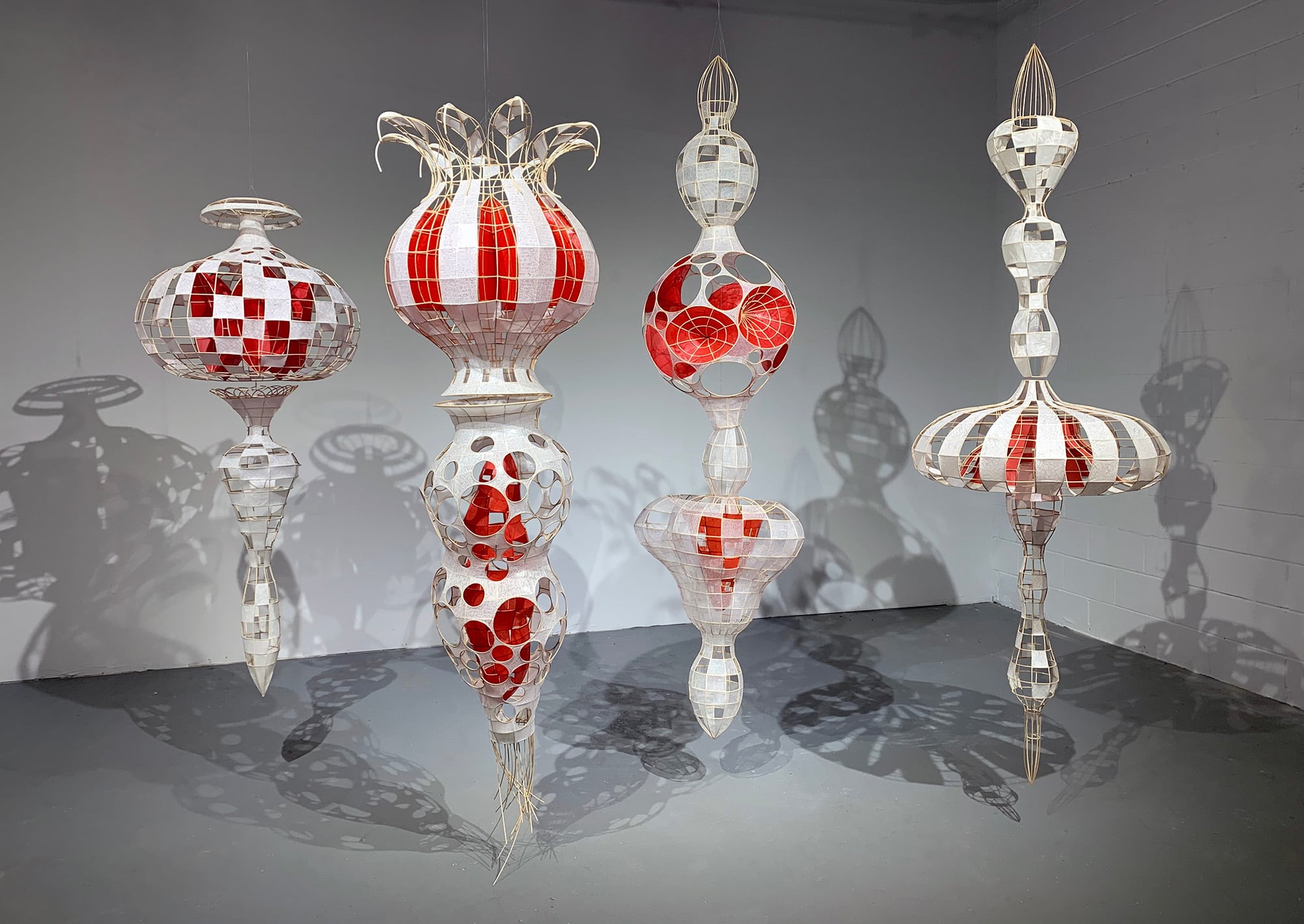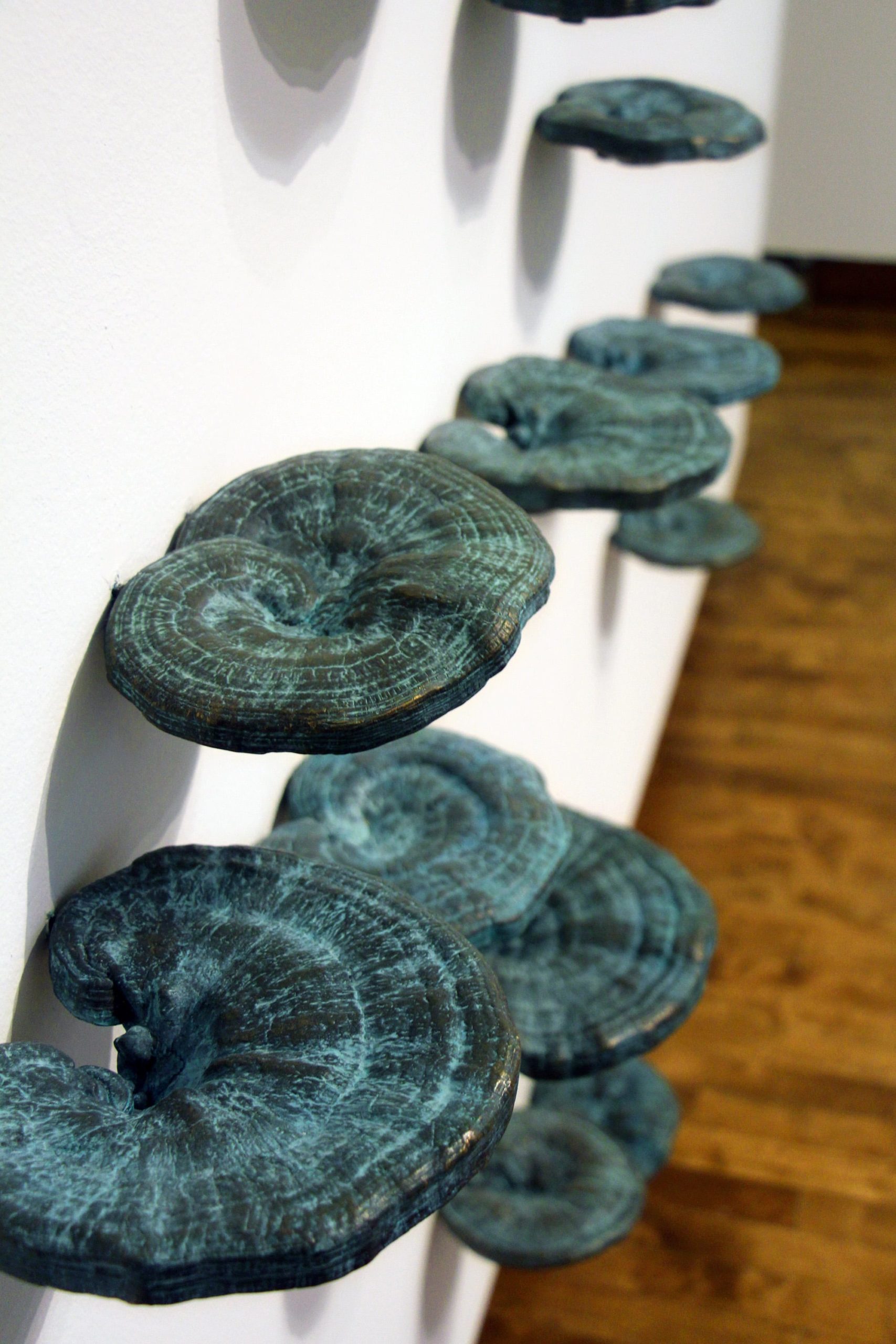Xiaojing Yan is a Chinese artist based in Toronto for many years. One of her exhibitions, “Out from among the tranquil woods,” features sculptures of lingzhi mushrooms. This mushroom has long been revered as the mushroom of immortality in Chinese legends, and Xiaojing Yan is fascinated by its power. The exhibition is broad in medium and subject, ranging from small sculptures to bulbous paper lanterns with rotating parts. However, each piece alludes to Yan’s background as a first-generation Chinese Canadian and her engagement with the way formidable natural power constantly intersects with culture, art, and lore. It’s a terrific exhibit of Chinese artwork and mythology if you’re interested in either!
Both Yan’s 2014 “Lingzhi” and 2020 installation “Fairy Ring” are made of bronze mushrooms with a turquoise patina and are displayed in precise patterns. The artist explains that the texture is improved to mimic concentric tree rings and spark concerns about aging and time. “I put them on the wall in a manner that bracket mushrooms would grow in steps in nature,” she explains. “Hoary things float in space against the white wall, and they appear to be suspended in mid-air. Bronze is commonly linked with monuments, images of authority, or eternity, creating a sense of tension between lingzhi’s delicate form and mythology.” Yan mixes the fungus’s natural spongy spores with other metals to create hybrid alloys and inlays, such as coatings on busts and sculptures.
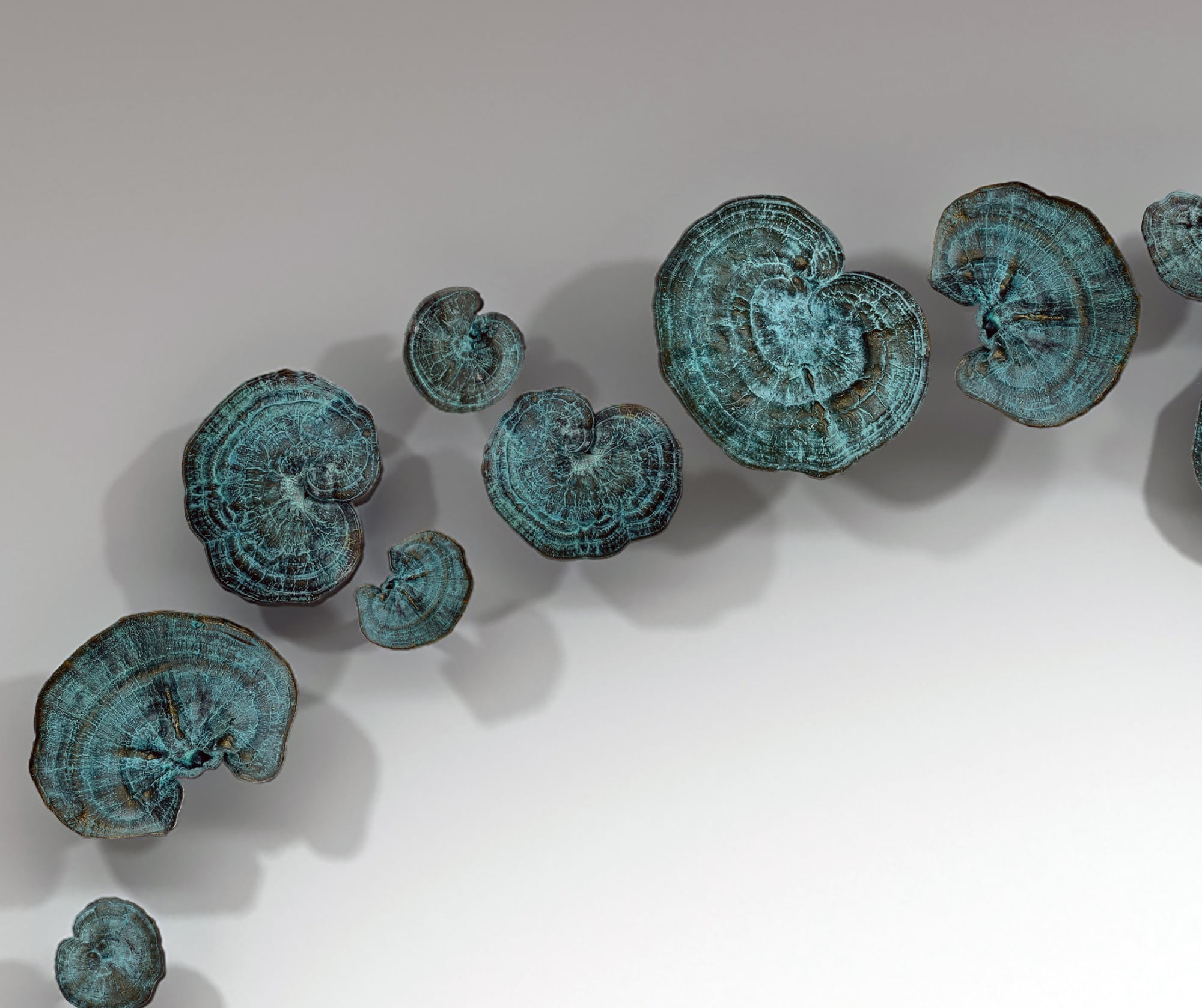
On the other hand, Yan’s more animalistic pieces included gilded cicada exoskeletons strung as a staircase and an animated sequence of cocoon-like sculptures that spin in a circular path. A recently carved wooden work, “Tiger’s Embrace,” combines alternating cat and person images in decreasing forms. The piece, depicting the Year of the Tiger and commissioned by the Royal Ontario Museum, will be displayed until January 2023. It is the first in a series of all twelve Chinese zodiac signs. According to her, the mixed work, which blurs the line between people and animals, is based on the Chinese custom of dressing children in tiger hats for good luck and protection. “I can’t help but think about self-transformation and adaptation as the warrior’s lion skin hat transforms into a cutesy baby tiger cap.”
Shortly, Yan will have exhibits in Paris, Shenzhen, Shanghai, and Nevada. She is currently working on a project funded by Canada Council for the Arts. Her site and Instagram are great places to discover more folklore-inspired works.
